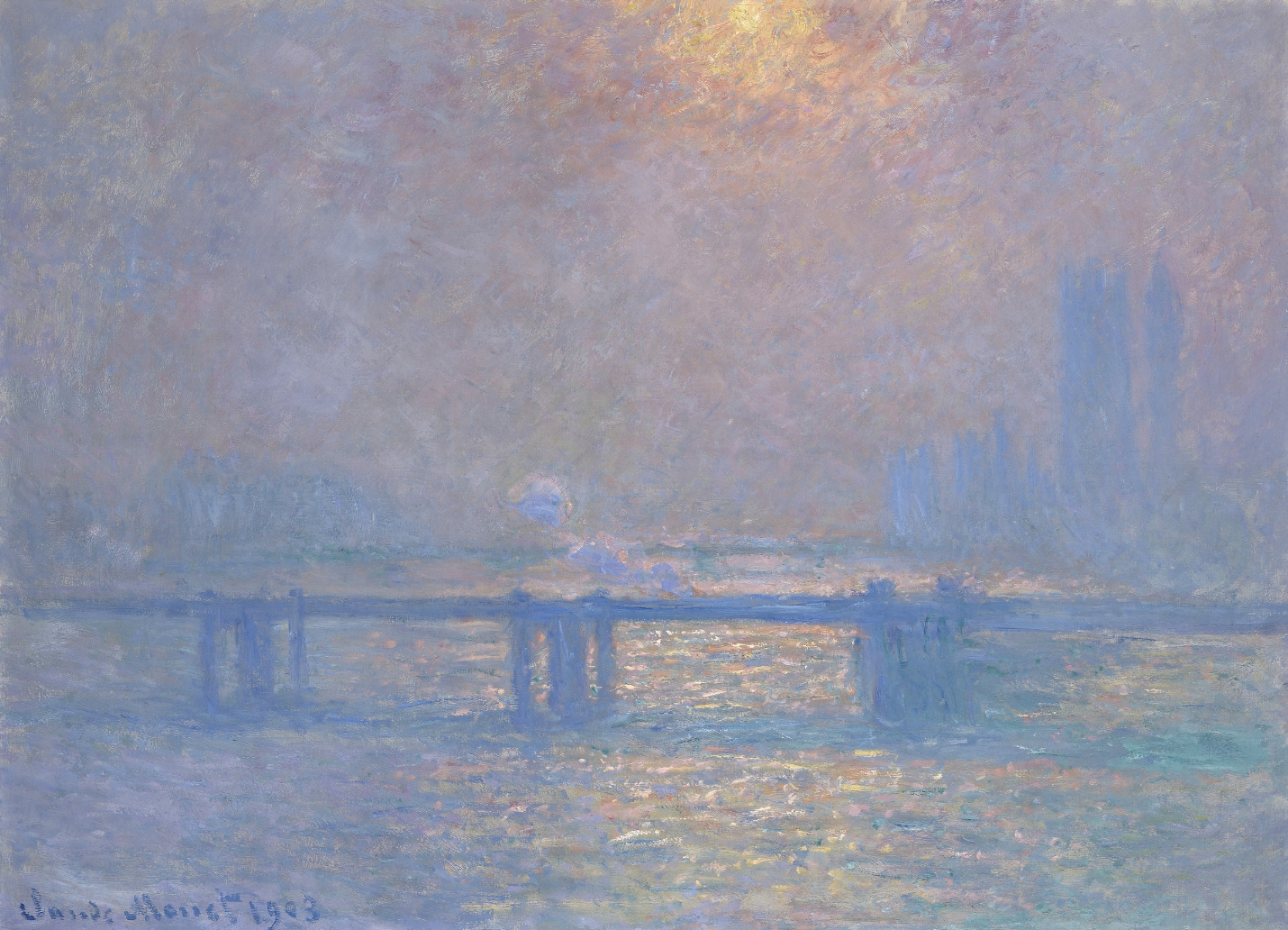Monet and the Power of the Repeated Image
Claude Monet - Charing Cross Bridge, The Thames, 1903
I recently visited a small exhibition dedicated to Claude Monet’s paintings of London and the River Thames. (‘Monet and London: Views of the Thames’ is at the Courtauld Gallery, London until 19 January.)
‘Every day I find London more beautiful to paint.’
Claude Monet
Monet first painted London in 1870, when, as a poor artist, he took refuge there during the Franco-Prussian War. Thirty years later he returned, a wealthy man, and installed himself in a top-floor suite at the prestigious Savoy Hotel, from the balcony of which he had exceptional views of the Thames.
Over three stays between 1899 and 1901, Monet created a series of works depicting Charing Cross Bridge, Waterloo Bridge and the Houses of Parliament (for the last of which he adjourned to a terrace in St Thomas’s Hospital on the south bank). He began the paintings in London, finished them later in his studio in Giverny, and presented them to the public at a successful exhibition in Paris in 1904.
Claude Monet- Waterloo Bridge, Sunlight Effect, 1903
‘It has to be said that this climate is so idiosyncratic; you wouldn’t believe the amazing effects I have seen in the nearly two months that I have been constantly looking at this River Thames.’
Monet was particularly enchanted by London fog. He relished its interaction with light; the fleeting colours; the romantic mood; the way buildings and structures loomed out of it, as if suspended in mid-air.
‘The fog assumes all sorts of colours; there are black, brown, yellow, green, purple fogs, and the interest in painting is to get the objects as seen through all these fogs.’
The very particular London atmosphere was later termed ‘smog.’ It was the result of industrial smoke and coal particles mixing with clouds, steam and vapour. Smog was often yellow due to large concentrations of sulphurous emissions.
Claude Monet- Waterloo Bridge, Gray Weather, 1900
London was the most populous city in the world at the time, and the Thames was its central artery. The area was teeming with traffic, vibrant with commerce and heavy industry. Close to the Savoy an iron railway bridge led into the recently opened Charing Cross Station, and the south bank of the river was peppered with tall-chimnied factories. All of which Monet regarded as admirable symbols of modernity.
Strange to think how perceptions have changed. Where he saw vitality, we see congestion. Where he saw progress, we see pollution. Where he saw romance, we see health hazard.
‘I so love London! But I only love London in the winter… Without the fog, London wouldn’t be a beautiful city. It’s the fog that gives it its magnificent breadth. Its regular and massive blocks become grandiose within that mysterious cloak.’
The Thames shimmers in the soft golden light, plied by small boats and barges. The horse-drawn double-decker buses grind to a halt on Waterloo Bridge, its grey granite piers glowing pink. The chimneys on the far bank belch smoke; a speeding train trails steam as it heads into Charing Cross; and the horizon merges with the sky. The vista is bathed in radiant colour, a yellow haze, a mysterious, haunting gloom. It turns blue and then orange. A small red sun pierces the fog. The Houses of Parliament, symbol of imperial splendour, float in the distance, shrouded in silver mist, reduced to abstract, shadowed shapes. ‘All that is solid melts into air.’
Monet would make a start on a picture and then move on to another five minutes later as the light changed, working on up to twelve canvases at a time. Later, back in the studio, he would exaggerate and enhance effects and colours.
‘My practiced eye has found that objects change in appearance in a London fog more and quicker than in any other atmosphere, and the difficulty is to get every change down on canvas.’
Claude Monet - Houses of Parliament, 1904
Monet observed that the power of his Thames series derived from the way it explored a consistent theme with infinite variety.
[The individual paintings] ‘take on their full value only in comparison and succession of the entire series.’
Strangely perhaps, I was prompted to reflect on the world of commercial communication.
Some years ago, I attended a talk by the esteemed fashion designer and retailer, Paul Smith. He explained that, when it came to window displays, he believed in ‘the power of the repeated image.’ Accompanying a pale blue cotton shirt with a royal blue version of the same shirt; and then navy and deep indigo; next to a twill or a denim execution of the same design; adding a polka dot pattern, a striped print or floral detail. It was theme and variation played by an orchestra of blue garments. And it created a pleasing, harmonious effect. At once both thrilling and reassuring.
[I saw] ‘Wonderful things, but none lasting more than five minutes, it is enough to drive you mad.’
After the success of the 1904 Paris exhibition, Monet was keen to present his Thames pictures in London the following year. Unable to borrow back enough sold works, he tried completing unfinished paintings from the original series. But eventually he gave up. The Courtauld show, featuring 21 views of the Thames, finally achieves his ambition, just 300 metres from the Savoy where many of them were created.
'A foggy day, in London town,
Had me low, and it had me down.
I viewed the morning with much alarm,
The British Museum, it lost its charm.
How long I wondered,
Could this thing last,
But the age of miracles, it hadn't past.
For suddenly, I saw you standing right there,
And in foggy London town,
The sun was shining everywhere.’
Frank Sinatra, 'A Foggy Day (In London Town)’ (G Gershwin / I Gershwin)
No. 496



